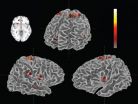(Press-News.org) JUPITER, FL, December 16, 2010 – Scientists from the Florida campus of The Scripps Research Institute have shown that prions, bits of infectious protein that can cause fatal neurodegenerative disease such as bovine spongiform encephalopathy (BSE) or "mad cow disease," have the ability to adapt to survive in a new host environment.
In this regard, although they lack DNA and RNA, they behave much like viruses, producing distinct self-perpetuating structural mutations that provide a clear evolutionary advantage.
The study was published this week in the online Early Edition the journal Proceedings of the National Academy of Sciences.
"We found that when a particular prion strain is transferred from brain cells to a different cell line, its properties gradually change, giving rise to a variant strain that is better adapted to this new cellular environment," said Charles Weissmann, M.D., Ph.D., the head of Scripps Florida's Department of Infectology, who led the study. "If those same prions are subsequently transferred to another cell line, they change again, adapting to these new host cells. And if returned to the brain, the prions gradually regain their original properties. We found physical evidence that, at least in one case, the fold of the prion changed when its properties changed."
Darwinian Evolution Without DNA
These new findings come approximately one year after Weissmann and colleagues published a study in the January 1, 2010 edition of the journal Science that showed that prions were capable of Darwinian evolution.
That earlier study also showed that prions can develop large numbers of mutations and that these mutations can bring about such evolutionary adaptations as drug resistance, a phenomenon previously known to occur only in bacteria and viruses. This study also suggested that the normal prion protein – which occurs naturally in mammalian cells – may prove to be a more effective therapeutic target than its abnormal toxic relation.
"Because prions can adapt to changing environments, it now becomes clear that it will be more difficult than originally thought to find drugs that will work against them," Weissmann said. "But if you could develop a drug that inhibits formation of the normal prion protein, you could, in essence, starve the infectious prions and prevent them from reproducing. This approach to treatment, although technically demanding, can be envisaged because, as we have shown earlier, deprivation of PrP is not detrimental to health – at least to the health of mice."
Folding and Misfolding
Prions, which are composed solely of protein, are classified by distinct strains, characterized by their incubation time and the disease they cause. In addition to BSE/mad cow disease in cattle, diseases caused by prions include scrapie in sheep, chronic wasting disease in deer, and variant Creutzfeldt-Jakob disease in humans. Prions have the ability to reproduce, despite the fact that they contain no nucleic acid genome.
Mammalian cells normally produce cellular prion protein or PrPC. During infection, abnormal or misfolded protein – known as PrPSc – converts the normal host prion protein into its toxic form by changing its conformation or shape. The end-stage consists of large sheets (polymers) of these misfolded proteins, which causes massive tissue and cell damage.
"The infectious prion protein can fold in different ways, and depending on the fold, a different prion strain results," Weissmann said. "As long as prions are maintained in the same host, they retain their characteristic fold, so that strains breed true."
When prions multiply, however, that fold is not always reproduced correctly, so a prion population contains many variants, albeit at low levels.
The new study found that when a prion population is transferred to a different host, one of the variants may replicate faster – an evolutionary advantage – and become the dominant strain. This new population also contains variants, one of which may be selected over others when transferred to a different host.
"The result is that prions, although devoid of genetic material, behave similarly to viruses and other pathogens, in that they can mutate and undergo evolutionary selection," Weissmann said. "They do it by changing their fold, while viruses incur changes in their nucleic acid sequence."
Diverse Yet Related
The new study suggests that prion populations constitute a "quasi-species" similar in nature to RNA viruses and retroviruses, such as flu viruses and HIV.
The idea of a quasi-species was first conceived by Manfred Eigen, a German biophysicist who won the Nobel Prize in Chemistry in 1967. Basically, a quasi-species is a complex, self-perpetuating population of diverse and related entities that act as a whole. It was Weissmann, however, who in 1978 provided the first confirmation of the theory through the study of a particular bacteriophage – a virus that infects bacteria – while he was director of the Institut für Molekularbiologie in Zürich, Switzerland.
But that's where the comparison ends, Weissmann said.
"The fact that they behave like viruses doesn't mean they're anything like a virus," he said. "A bicycle is like a car in that it gets you from one place to the other, but they're not the same. The end effect is the same, however. Prions and viruses are both able to change their structure to survive."
INFORMATION:
The first author of the study, "Transfer of a Prion Strain to Different Hosts Leads to Emergence of Strain Variants," is Sukhvir P. Mahal of Scripps Research. Other authors include Shawn Browning, Jiali Li, and Irena Suponitsky-Kroyter, also of Scripps Research. For more information, see http://www.pnas.org/content/early/2010/12/13/1013014108.abstract .
The study was supported by the National Institutes of Health and the Alafi Family Foundation.
About The Scripps Research Institute
The Scripps Research Institute is one of the world's largest independent, non-profit biomedical research organizations, at the forefront of basic biomedical science that seeks to comprehend the most fundamental processes of life. Scripps Research is internationally recognized for its discoveries in immunology, molecular and cellular biology, chemistry, neurosciences, autoimmune, cardiovascular, and infectious diseases, and synthetic vaccine development. Established in its current configuration in 1961, it employs approximately 3,000 scientists, postdoctoral fellows, scientific and other technicians, doctoral degree graduate students, and administrative and technical support personnel. Scripps Research is headquartered in La Jolla, California. It also includes Scripps Florida, whose researchers focus on basic biomedical science, drug discovery, and technology development. Scripps Florida is located in Jupiter, Florida. For more information, see www.scripps.edu .
Scripps Research scientists show prions mutate and adapt to host environment
Findings point to normal prion protein as most effective therapeutic target for 'mad cow' and related diseases
2010-12-18
ELSE PRESS RELEASES FROM THIS DATE:
Researcher finds proximity to freeway associated with autism
2010-12-18
LOS ANGELES (December 16, 2010) – Living near a freeway may be associated with increased risk of autism, according to a study published by a team of researchers from Children's Hospital Los Angeles, the Keck School of Medicine of the University of Southern California (USC) and the UC Davis MIND Institute.
The paper will appear online in the journal Environmental Health Perspectives this week.
"Children born to mothers living within 309 meters of a freeway appeared to be twice as likely to have autism," said Heather Volk, PhD, MPH, and first author on the study. Dr. ...
Study links emotional and neural responses to musical performance
2010-12-18
BOCA RATON, FL (December 17, 2010) – It is well known that music arouses emotions. But why do some musical performances move us, while others leave us flat? Why do musicians spend years perfecting the subtle nuances that bring us to tears? Scientists at Florida Atlantic University have now identified key aspects of musical performance that cause emotion-related brain activity, and they have shown for the first time how these performance nuances work in the brain, in real-time (http://www.science.fau.edu/video/emotionmovie/)*.
The study, titled "Dynamic Emotional and ...
Breakthrough in worm research has implications for human disease studies
2010-12-18
RENO, Nev. – It's just a worm, a tiny soil-dwelling nematode worm – but the implications are big for biomedicine and circadian biology as shown in a recent study authored by University of Nevada, Reno researcher Alexander van der Linden. The article on the circadian clock of the Caenorhabditis elegans worm was published in the peer-reviewed, open-access journal, PLoS Biology.
"Circadian rhythms are important in all organisms because they regulate biological functions such as food intake, temperature, metabolic rate and sleep," van der Linden said. "The discovery of clock-controlled ...
Novel drug offers hope for early intervention in cystic fibrosis patients
2010-12-18
Cystic fibrosis (CF) patients with normal to mildly impaired lung function may benefit from a new investigational drug designed to help prevent formation of the sticky mucus that is a hallmark of the disease, according to researchers involved in a phase 3 clinical trial of the drug. Called denufosol, the investigational medication can be given early in the CF disease process, and may help delay the progression of lung disease in these patients, the researchers found.
The findings were published online ahead of the print edition of the American Thoracic Society's American ...
Study: Customers who participate in eBay's 'community' become better buyers and sellers
2010-12-18
A new study from Rice University's Jones Graduate School of Business finds that customers of eBay who participate in the company's online communities become more conservative buyers and more selective and efficient sellers.
The study, "The Impact of Customer Community Participation on Customer Behaviors: An Empirical Investigation," appeared recently in the journal Marketing Science and was co-authored by Rice's Sharad Borle, associate professor of marketing; Siddharth Singh, assistant professor of marketing; and Utpal Dholakia associate professor of management, along ...
Beetroot juice could help people live more active lives
2010-12-18
New research into the health benefits of beetroot juice suggests it's not only athletes who can benefit from its performance enhancing properties – its physiological effects could help the elderly or people with heart or lung-conditions enjoy more active lives.
Beetroot juice has been one of the biggest stories in sports science over the past year after researchers at the University of Exeter found it enables people to exercise for up to 16% longer. The startling results have led to a host of athletes – from Premiership footballers to professional cyclists – looking into ...
Ben-Gurion U. researchers: High resistance rates among acute otitis media pathogens in children
2010-12-18
BEER-SHEVA, ISRAEL, December 17, 2010 – As middle ear infections increase during the winter months, researchers from Ben-Gurion University of the Negev (BGU) suggest that in many cases the most appropriate treatment is "watchful waiting" instead of using antibiotics immediately.
The review, published in the scientific journal Expert Review of Anti-Infective Therapy, does not suggest use of watchful waiting in all cases when the infection, also known as Acute Otitis Media (AOM), is suspected by a pediatrician, but notes that a large majority of cases can be treated this ...
550 million years ago rise in oxygen drove evolution of animal life
2010-12-18
Researchers funded by the Biotechnology and Biological Sciences Research Council (BBSRC) at the University of Oxford have uncovered a clue that may help to explain why the earliest evidence of complex multicellular animal life appears around 550 million years ago, when atmospheric oxygen levels on the planet rose sharply from 3% to their modern day level of 21%.
The team, led by Professor Chris Schofield, has found that humans share a method of sensing oxygen with the world's simplest known living animal - Trichoplax adhaerens - suggesting the method has been around since ...
The high price of sleep disorders
2010-12-18
Danish sleep researchers at the University of Copenhagen and the Danish Institute for Health Services Research have examined the socio-economic consequences of the sleep disorder hypersomnia in one of the largest studies of its kind. The sleep disorder has far-reaching consequences for both the individual and society as a whole.
Hypersomnia is characterised by excessive tiredness during the day. Patients who suffer from the disorder are extremely sleepy and need to take a nap several times a day. This can occur both at work, during a meal, in the middle of a conversation ...
Electric current moves magnetic vortices
2010-12-18
VIDEO:
In this animated illustration, an electron (black ball) flies across a lattice of magnetic vortices. The forces transferred in the process allow the magnetic structures to be controlled with relatively...
Click here for more information.
One of the requirements to keep trends in computer technology on track – to be ever faster, smaller, and more energy-efficient – is faster writing and processing of data. In the Dec. 17 issue of the journal Science, physicists ...
LAST 30 PRESS RELEASES:
Theory-breaking extremely fast-growing black hole
ŌURA and National University of Singapore open Joint Lab to advance research in personalized preventive health
Hope for smarter lung cancer care
Singapore scientists discover lung cancer's "bodyguard system" - and how to disarm it
Bacteria use wrapping flagella to tunnel through microscopic passages
New critique prompts correction of high-profile Yellowstone aspen study, highlighting challenges in measuring ecosystem response to wolf reintroduction
Stroke survivors miss critical treatment, face greater disability due to systemic transfer delays
Delayed stroke care linked to increased disability risk
Long term use of anti-acid drugs may not increase stomach cancer risk
Non-monetary 'honor-based' incentives linked to increased blood donations
Natural ovulation as effective as hormones before IVF embryo transfer
Major clinical trial provides definitive evidence of impacts of steroid treatment on severe brain infection
Low vitamin D levels shown to raise risk of hospitalization with potentially fatal respiratory tract infections by 33%
Diagnoses of major conditions failing to recover since the pandemic
Scientists solve 66 million-year-old mystery of how Earth’s greenhouse age ended
Red light therapy shows promise for protecting football players’ brains
Trees — not grass and other greenery — associated with lower heart disease risk in cities
Chemical Insights scientist receives Achievement Award from the Society of Toxicology
Breakthrough organic crystalline material repairs itself in extreme cold temperatures, unlocking new possibilities for space and deep-sea technologies
Scientists discover novel immune ‘traffic controller’ hijacked by virus
When tropical oceans were oxygen oases
Positive interactions dominate among marine microbes, six-year study reveals
Safeguarding the Winter Olympics-Paralympics against climate change
Most would recommend RSV immunizations for older and pregnant people
Donated blood has a shelf life. A new test tracks how it's aging
Stroke during pregnancy, postpartum associated with more illness, job status later
American Meteorological Society announces new executive director
People with “binge-watching addiction” are more likely to be lonely
Wild potato follows a path to domestication in the American Southwest
General climate advocacy ad campaign received more public engagement compared to more-tailored ad campaign promoting sustainable fashion
[Press-News.org] Scripps Research scientists show prions mutate and adapt to host environmentFindings point to normal prion protein as most effective therapeutic target for 'mad cow' and related diseases


